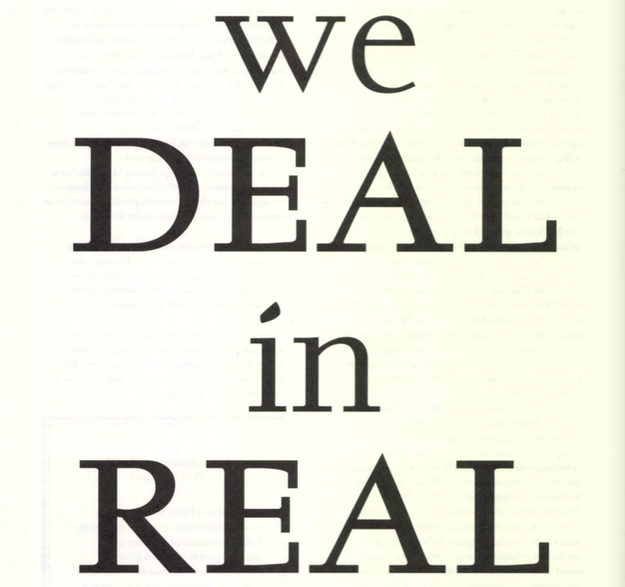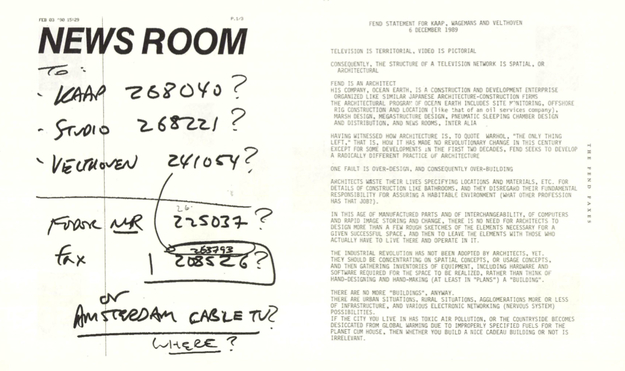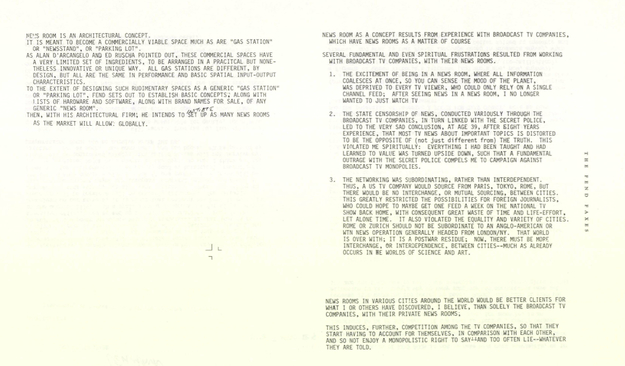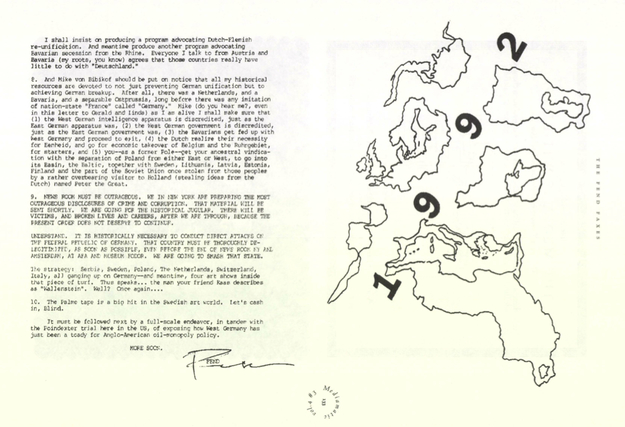A second and very contemporary possibility is to go around the world as an institute with an adherent logo. In this way artist Y is the personified institute of the authentic gesture in painting while on the other hand, artist 'x' bases his corporate identity on a mechanically reproducable product which denies the original. Imagine a prestigious exhibit opening where director artists are introduced by the collegue's director-gallery owners to coUegue-director-directors of truly large companies. All in the family and thats how we want to keep it!
The third strategy is not to be called art. Peter Fend calls this strategy and rightly so. We deal in real. Fend is, as you can also read in The International Herald Tribune of October 20th 1987, in an article by Warren Getier, titled Un Investigates Charge that military Data was passed on to Tehran, the founder of the Ocean Earth Construction and Development Corporation. The British New Scientist of November 5th, 1987, from the pen of Debora Mac Kenzie in "Fending off a scandel in the Gulf, an American Entrepeneur!" (The Times (gb) from September 27 1989) gives an account from a large environment conference held in Venice about the careful management of the (in the meantime) completely soaped and choked un Adriate Sea.
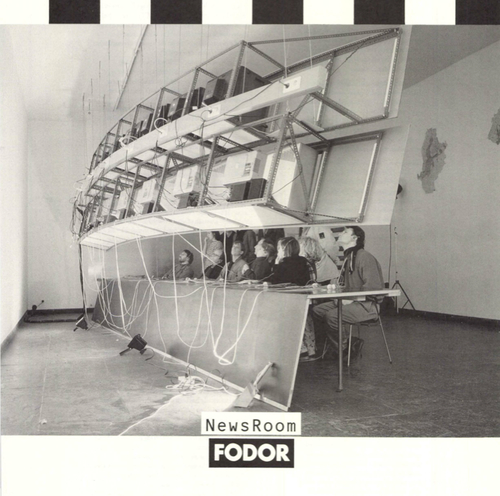
Nick Nattahl, in an article with the heading "Landslip was factor in Chernobyl blast, expert says!”, discusses new evidence which contradicts the then current, official version of the worlds most serious nuclear industrial accident. This material was put forward by "Mr. Peter Fend, an American expert in satellite imaging", during this conference of scientists held by the United Nations. In this article it is mentioned that Fend accuses the Soviet and the Western authorities, especially West German, of deliberately interpreting information wrongly and misleading the public. Since Fend has access to visual sources about satellite data bought by the Ocean Earth Construction and Development Corporation, he can support his claim. In the case of Chernobyl it's especially concerned with the interpretation of a dark line that intersects the terrain around the reactor. According to the official version, this line is a wreath of smoke resulting from the fire in the reactor. According to Fend, it is remarkable that also in the following weeks these line/ wreath of smoke maintain itself in the same spot, while, first of all, the wind direction doesn’t correspond, and secondly, the fire has long been extinguished. The correct interpretation of the line is painful for the authorities because there is talk of a serious mistake: the reactor isn't well grounded and the direct cause of explosion is landslide and destabilization.
In the 1980’s, Fend is gradually forced up to the sector on fine art and in one of his numerous texts, he calls the museum context a proof of his failure. The authorities no longer allow for all material from commercial satellites to be available. The government, or the governmentally-financed research institutes, is owner of the satellite. The owner now has the right to veto the usage of material. Censorship? Here we arrive at the point where it becomes more interesting for Fend (who historically has been perhaps the most important motive to establish this censorship) to choose the right museum as custodian of the artistic content as outburst basis. The museum as Vatican nunciature, where immumity counts for criminals on the run? The practice is more convincing. Fends assertion now is: collecting and analyzing satellite material and arriving at conclusions is the most adequate and contemporary form of landscape painting. There is a long tradition in these, based on unhindered observation.
The following fragments are taken from various texts of Peter Fend and may serve as an introduction to the new landscape painting which belongs in a museum for modern art.
Landscape Paintings
Realistic landscape paintings can be produced nowadays with geometrically-registered multispectral satellite data, manipulated with image-processing computers, yielding virtually-incontrovertible revelations of on-site conditions.
Certain space agencies have begun to call their satellite photographs 'art', thinking that attractive color images constitute art. Actually, as the artist espoused in his ‘Art of the State' essay for a show by his company, the photographs per se, like any other image per se, does not become art until they convey meaning - substantial meaning.
Although the satellite sourced data-base for any image of sites on earth is void of meaning, the organization and manipulation of that data base can reveal understandings about any site, and about the human actions at that site, that are rich in meaning. Each image or group of images can be read to convey distilled reflections about the human enterprises on this planet: about how, and whether it works.
Napoleon would see a line drawn somewhere through the middle of Europe, in Prussia, and he would see tier upon tier of artillery. He would mostly notice the extremely long-range artillery: the ballistic missiles and cruise missiles, which permit the armies on both sides of the one line through Europe to shoot at each other from nearly 5,000 km distance. An entire continent had been reduced to a mutual firing range. Even artillery positions outside the continent, including French submarine batteries and Soviet ss 20s behind the Urals, could reach the opposite side of the continent. Never mind Wagram or Austerlitz; all of a continent was a battle-field.
At the center of the battle-field sits a wall. In the book Fantastic Architecture artist Joseph Beuys suggested that the wall be raised by 10 centimeters - for better proportions. People could try to get over or under the wall: people could be shot at the wall: people could die at the wad. But its main function was not practical but symbolic. Its main function was, and is, aesthetic. Europe is the battlefield, and the Berlin Wall is the architectural monument, for now. The wall cannot be rid without a resolution of the battle.
A resolution of the battle begins with public surveillance. As has often been written, television and mass media iff at a very new architecture. They dissolve political borders, erase distances, reduce the room to an information display module. When the public watches tv the house becomes a viewing station. It becomes a platform from which to seethe world. More vital than a wall, for protection and strenght, is the satellite dish. Once, for a castle, you needed the walls of a palazzo, coupled with moats. Now you need an array of electronic sensors, and an ability to rapidly coordinate incoming signals for timely response.
